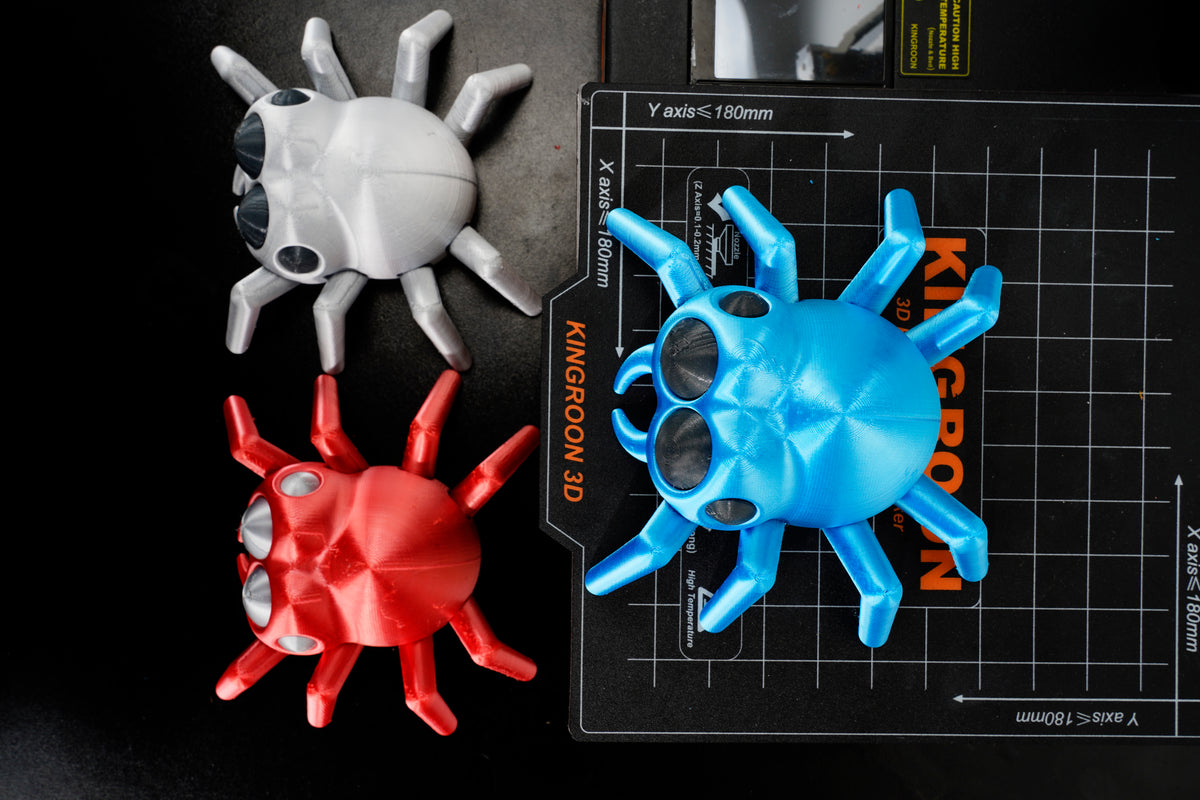Kingroon KP3S 3.0 3D Printer with a direct drive extruder(Clearance Sale)
🎄 Merry Christmas!🎅🎁
Spread joy, love, and creativity. ✨

Kingroon KP3S 3.0 3D Printer with a direct drive extruder(Clearance Sale)
Kingroon KP3S 3.0 3D printer is a desktop 3D printer with a direct drive extruder for various 3D printer filament prints, like PLA, TPU, PETG, and more. The linear guide rails of both the X-axis and Y-axis highly increase the print accuracy.
Kingroon KP3S ensures you silent print with the TMC2225 stepper driver. The heatbed of Kingroon KP3S comes with a removable magnetic print surface, which makes it easier to take prints off your heatbed.
· Titan Direct drive extruder.
· TMC2225 stepper driver for quiet print.
· Removable magnetic print surface.
· Linear rails X-axis and Y-axis.
· 180*180*180mm Large Build Volume.
· 95% Pre-assembly for quick installation.
Shipping cost is based on weight. Just add products to your cart and use the Shipping Calculator to see the shipping price.
We want you to be 100% satisfied with your purchase. Items can be returned or exchanged within 30 days of delivery.
Recently Viewed Products
Titan Direct Drive Extruder
3:1 gearing of Titan extruder triples the resolution of the system and allows for smooth printing. The lightweight, yet powerful direct extruder is perfect for felxible filament print, especially like TPU, ABS, etc.
Titan Direct Drive Extruder
Lightweight, yet powerful direct extruder.
Compact & Lightweight Motor
Lightweight and compact Nema 17 stepper motor.

3:1 Gear Reduction
3:1 gearing triples the resolution of the system and allows for smooth printing.
Every Material
Good for PLA, ABS, TPU, Nylon printing.
Kingroon KP3S Installation
- 10min Easy Installation
- Half-assembled out of box
- Well tested in factory
Kingroon KP3S Slicer Settings
- Compatible with Cura, Simplify3D, etc slicer softwares
- Official Cura slicer profiles available
- More official recommended settings for various materials print
| Table header 0 | Kingroon KP3S 3D Printer Specifications |
|---|---|
| Technology | FDM |
| Print Volume | 180*180*180mm |
| Machine Size | 280*285*370mm |
| Packaging Size | 400*390*200mm |
| Net Weight | 6kg |
| Languages | 8 languages (EN / RU / JP / FR / ES / DE / CN / IT) |
| Print Via | USB / TF card |
| Machine Power | 240W |
| Input Voltage | 110V-220V |
| Power Supply | 24V 15A 360W |
| Feeder System | Direct Extruder |
| Print Bed | Heated bed with soft magnetic sticker |
| Table header 0 | Kingroon KP3S 3D Printer Packing List |
|---|---|
| 1 | Pre-assembled top frame * 1 |
| 2 | Pre-assembled printer base * 1 |
| 3 | Power supply * 1 |
| 4 | Power cable * 1 |
| 5 | USB cable * 1 |
| 6 | 0.4mm nozzle * 1 |
| 7 | 5*8mm coupling * 1 |
| 8 | 16GB TF card * 1 |
| 9 | M5*20 screw * 3 |
| 10 | Filament holder * 1 |
| 11 | PLA filament * 10meter |
| 12 | 8-10mm wrench * 1 |
| 13 | 1.5/2.0/2.5/3.0mm L wrench set * 1 |
| 14 | Pliers * 1 |
Kingroon KP3S Review
What Our Customers Say
FAQ of Kingroon KP3S
KP3S Upgrade Kits
ITEMS THAT WORTH THE HYPE
Here are our best-selling upgrade products on Kingroon KP3S 3D printer.
SHOP NOW

























